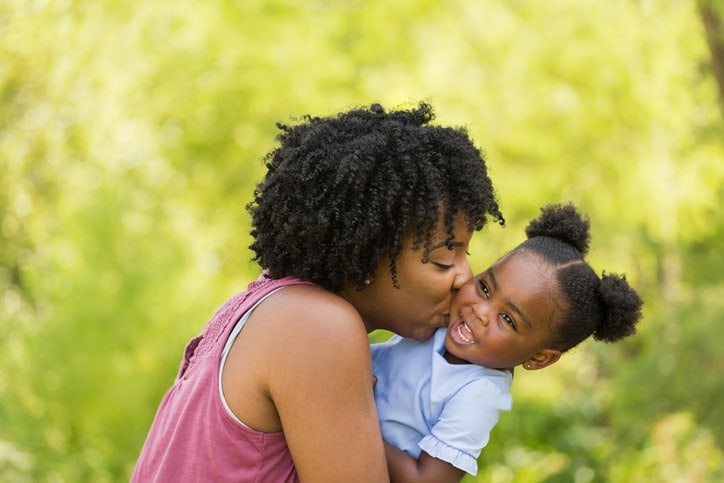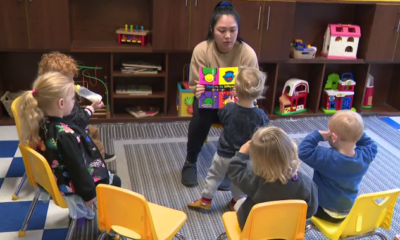Advice
Is your child securely attached?

The Strange Situation procedure: The original test of the infant-parent bond
We hear a lot about “secure attachment relationships.” But what exactly do researchers mean by this term? Psychologist Mary Ainsworth first devised the Strange Situation procedure to assess the quality of an infant’s attachment to his or her mother. In this article I will:
- explain the procedure, and discuss how babies respond to it,
- address why some children are insecurely-attached,
- examine how parenting and culture can affect attachment,
- explore how early attachments might affect adult outcomes, and
- review evidence that babies are primed to develop multiple attachments — not just a single, focal attachment to one parent.


We’ll also consider an important question: To what extent has research over-emphasized the role of the mother? Shouldn’t we also be talking about the roles of fathers, grandparents, older siblings, and other caregivers? As we’ll see, the Strange Situation — and attachment theory — is grounded on cultural assumptions that don’t apply everywhere.
What is a secure attachment?
According to the theories of John Bowlby (1988), children are securely-attached if they are confident of a caregiver’s support. They understand the caregiver to be accessible and responsive, and — as they develop independence during infancy — they come to think of the caregiver as a “secure base.” As long as the caregiver is nearby, securely-attached children feel free to explore, play, and socialize with others.
In addition, securely-attached babies tend to
- keep track of the caregiver during exploration,
- approach or touch the caregiver when anxious or distressed; and
- find comfort in proximity and contact.
And, in the long-term, kids with secure attachments seem to have many advantages — emotional, social, medical, and cognitive.
But how can you know if researchers would classify your own baby as securely attached? How do they actually measure attachment security? The original method, developed by the influential psychologist Mary Ainsworth, is the laboratory procedure called the “Strange Situation” (Ainsworth et al 1978). It tests how babies or young children respond to the temporary absence of their mothers. Here’s how it works.
The Strange Situation
It begins with mother and child being ushered into a room containing toys. Then the child experiences the following steps, with each step taking approximately 3 minutes.
- The mother sits in a chair while the child is allowed to explore the room.
- A friendly woman — previously unknown to the child — enters the room. She talks to the mother, and then gets on the floor and interacts with the child.
- The mother says goodbye and leaves the room. The child is left alone with the friendly stranger.
- The mother returns, and the stranger departs. The mother offers comfort to the child, and encourages the child to play with the toys.
- The mother leaves for a second time. On this occasion, the child is left completely alone. Nobody else is in the room.
- The friendly stranger returns and offers comfort to the child. The stranger tries to distract the child with toys.
- The mother returns for a second reunion. Once again, the stranger leaves, and the mother tries to comfort her child.
How children respond to the Strange Situation
As suggested by its name, the Strange Situation was designed to present children with an unfamiliar, but not overwhelmingly frightening, experience (Ainsworth et al 1978). When a child undergoes the Strange Situation, researchers are interested in two things:
- how much the child explores the room, and
- how the child responds to the return of his or her mother.
Typically, a child’s response to the Strange Situation follows one of four patterns.
Securely-attached children: Free exploration, and happiness upon the mother’s return
Securely-attached children explore the room freely when their mothers are present, and they act friendly towards the stranger. After their mothers leave the room, they may become distressed and inhibited – exploring less, and avoiding the stranger. But when they are reunited with their mothers, they quickly recover. If they cry, they approach their mothers and hold them tightly. They are comforted by being held, and, once comforted, they are soon ready to resume their independent exploration of the world. Their mothers are responsive to their needs. As a result, securely-attached children know they can depend on their mothers when they are under stress (Ainsworth et al 1978).
Avoidant-insecure children: Little exploration, and little emotional response to the mother
Children with an avoidant attachment style don’t explore much, and they don’t show much emotion when their mothers leave. They don’t seem upset about being left alone with the stranger; and, when the mother returns, these children tend to ignore her or avoid eye contact with her (Ainsworth et al 1978).
Resistant-insecure (also called “anxious” or “ambivalent”) children: Little exploration, great separation anxiety, and an ambivalent response to the mother upon her return
Like avoidant children, kids with a resistant or anxious attachment style don’t explore much on their own. But unlike avoidant children, they are wary of strangers, and they may become very distressed when the mother leaves.
When the mother returns, resistant children are ambivalent. Although they want to re-establish close proximity to the mother, they are also resentful—even angry—at the mother for leaving them in the first place. As a result, resistant kids may cling to the mother, but fail to find solace in her attempts to offer comfort. They aren’t easily soothed (Ainsworth et al 1978).
Disorganized-insecure children: Little exploration, and a confused response to the mother.
The disorganized child may exhibit a mix of avoidant and resistant behaviors, but the main theme is one of confusion and disruption – hence the label “disorganized” (Main and Solomon 1986).
With kids who are avoidantly or resistantly attached, there is a consistent strategy being followed. The avoidant child is keeping up a strategy of disengagement from the caregiver. The resistant child is pretty consistent about signaling his or her negative emotions to the caregiver – expressing inconsolable distress in response to separation, displaying anxiety and anger.
By contrast, children with a disorganized attachment style don’t seem to have settled on a playbook. They want to approach their attachment figure for reassurance, but they feel fear as well, and this leads them to vacillate between approach and retreat, and to display odd behaviors during the Strange Situation – like freezing in place, or moving in repetitive, apparently purposeless ways (Granqvist et al 2017).
Are there other ways to measure attachment security?
Yes. The Strange Situation test was designed for the very young. As kids get older, researchers try other approaches, like the narrative story stem technique, where kids are presented with fictional scenarios (featuring a young protagonist who is experiencing trouble or distress) and asked to describe what happens next (Allen et al 2018).
If a child’s answer depicts secure attachment behavior (where the protagonist seeks out a primary caregiver and receives effective help), this is viewed as evidence that the child is securely-attached. Other responses may suggest an insecure attachment style, such as avoidant (the protagonist refuses to seek help) or resistant (the protagonist seeks help, but the caregiver’s intervention fails to remedy the situation).
There are also questionnaires and interviews for diagnosing attachment styles, such as the Attachment Interview for Childhood and Adolescence (AICA), and the Adult Attachment Interview (AAI).
What causes secure attachments? What causes insecure attachments?
Evidence that parenting influences infant attachment style
Numerous studies (conducted in mostly Western, middle class settings) report the same link: When caregivers are sensitive and responsive, they are more likely to have kids with secure attachments (Madigan et al 2024).
Does this prove causation? Not by itself. Maybe infants develop secure attachments because they’ve inherited certain genes from their parents — genes that give rise both to the tendency to develop secure attachments, and to the tendency to be sensitive and responsive toward infants.
But there are compelling arguments against the idea that genetic differences are driving individual differences in attachment security.
For instance, consider adopted children.
They haven’t inherited any genes from their parents, yet studies show that adopted infants – like other babies – are more likely to develop secure attachments when their parents are sensitive, responsive, and emotionally available (Verissimo and Salvaterra 2006; Almeida et al 2022).
Moreover, studies show that early intervention (teaching new parents how to increase their sensitivity) improves attachment security (Mountain et al 2017).
These aren’t highly-controlled experiments, but they offer further evidence that parenting shapes attachment.
And when researchers have tracked genes that we’d expect to correlate with attachment – genes that affect the regulation of dopamine, serotonin, and oxytocin, and influence the development of social relationships – the evidence hasn’t panned out.
A few, small studies have reported links with attachment security (e.g., Lakatos et al 2000; Barry et al 2008). But larger studies have failed to replicate the results, and — overall — there is little or no evidence that these genes play a substantial role in determining a child’s attachment style (Leerkes et al 2017; Khan et al 2020).
So we’ve got a strong case for the impact of parenting. But this begs the question. What does it mean to be a sensitive, responsive parent, and what specific behaviors should caregivers be directing at their babies?
Is cuddling the key to infant attachment security?
Ainsworth and others have created coding guidelines for judging whether or not a parent is behaving in “sensitive” and “responsive” ways. Typically, researchers look for evidence that parents are
- noticing a baby’s signals (e.g., fussing or crying),
- accurately interpreting these signals (e.g., the baby is crying because he is hungry), and
- responding promptly and appropriately.
Parents are given scores, and scores correlate with outcomes. For instance, parents who score high on Mary Ainsworth’s Maternal Sensitivity Scale are more likely to have infants who are securely-attached.
Yet the correlations are moderate at best. Not high. And correlations are actually pretty weak among some populations, including Americans of low socioeconomic status. This inspired Susan Woodhouse and her colleagues to question the importance of certain components of sensitivity and responsiveness — like being a good “mind-reader” and responding quickly to an infant’s distress.
Instead, Woodhouse’s team wondered about a very basic, very physical behavior: holding a crying baby, chest-to-chest, until that baby has fully calmed down.
The researchers call this “secure base provision”, and they monitored its use in a study of more than 80 mother-offspring pairs – all of them from low-income families. What did Woodhouse’s team discover?
Traditional measures of maternal sensitivity were uncorrelated with attachment security. But “secure base provision” had a big impact, more than doubling a baby’s chances of developing a secure attachment (Woodhouse et al 2020).
What’s more, the mothers in this study didn’t have to engage in this form of soothing every single time their babies were distressed. Even when moms were observed to provide a secure base less frequently – as little as 50% of the time – babies had a higher probability of developing a secure attachment.
What parental behaviors are linked with insecure attachment?
Woodhouse’s team looked at this questions, too, and they found that infants were more likely to end up with insecure attachments if their mothers responded to crying in ways that interfered with soothing. This included behavior like
- speaking in a harsh tone of voice;
- telling the infant not to cry; and
- ending the chest-to-chest soothing session before the baby had stopped crying.
Woodhouse and her colleagues also found connections between insecure attachment and maternal behavior that is frightening – like yelling at a crying baby, or suddenly looming over a baby’s face. As Woodhouse explains in a Lehigh University press release, such behavior was predictive of insecure attachment, “even if it happened only one time” during the observational period of the study.
“Similarly,” says Woodhouse, “if the mother did anything really frightening even when the baby wasn’t in distress, like saying ‘bye-bye’ and pretending to leave, throwing the baby in the air to the point they would cry, failure to protect the baby, like walking away from the changing table or not protecting them from an aggressive sibling, or even what we call ‘relentless play’ — insisting on play and getting the baby worked up when it is too much — that also leads to insecurity” (White 2019).
These findings are consistent with previous research, and some believe that frightening parental behavior may be especially linked with the development of disorganized attachment.
Children who are abused or neglected are more likely to suffer from disorganized attachment (Barnett et al 1999). But babies don’t have to be abused or neglected to develop disorganized attachment.
In some cases, parents themselves may be anxious or frightened – or dealing with unresolved trauma – so that they inadvertently transmit these fearful emotions to their infants (Main and Hess 1990; Granqvist et al 2017). In other cases, parents might simply be insensitive to what babies find scary (David and Lyons-Ruth 2005; Gedaly and Leerkes 2016).
If this sounds like you, is there anything you can do about it? Research suggests you can. In studies where parents from at-risk families were coached on how to better read their children’s cues, kids were less likely to develop disorganized attachments (Wright et al 2017).
See also The Dairy Free Mum | Child Intolerances
-

 Destination8 months ago
Destination8 months agoSingapore Airlines CEO set to join board of Air India, BA News, BA
-

 Breaking News10 months ago
Breaking News10 months agoCroatia to reintroduce compulsory military draft as regional tensions soar
-

 Tech News12 months ago
Tech News12 months agoBangladeshi police agents accused of selling citizens’ personal information on Telegram
-

 Gadgets3 months ago
Gadgets3 months agoSupernatural Season 16 Revival News, Cast, Plot and Release Date
-

 Productivity11 months ago
Productivity11 months agoHow Your Contact Center Can Become A Customer Engagement Center
-

 Gadgets3 weeks ago
Gadgets3 weeks agoFallout Season 2 Potential Release Date, Cast, Plot and News
-

 Breaking News10 months ago
Breaking News10 months agoBangladesh crisis: Refaat Ahmed sworn in as Bangladesh’s new chief justice
-

 Toys12 months ago
Toys12 months ago15 of the Best Trike & Tricycles Mums Recommend























